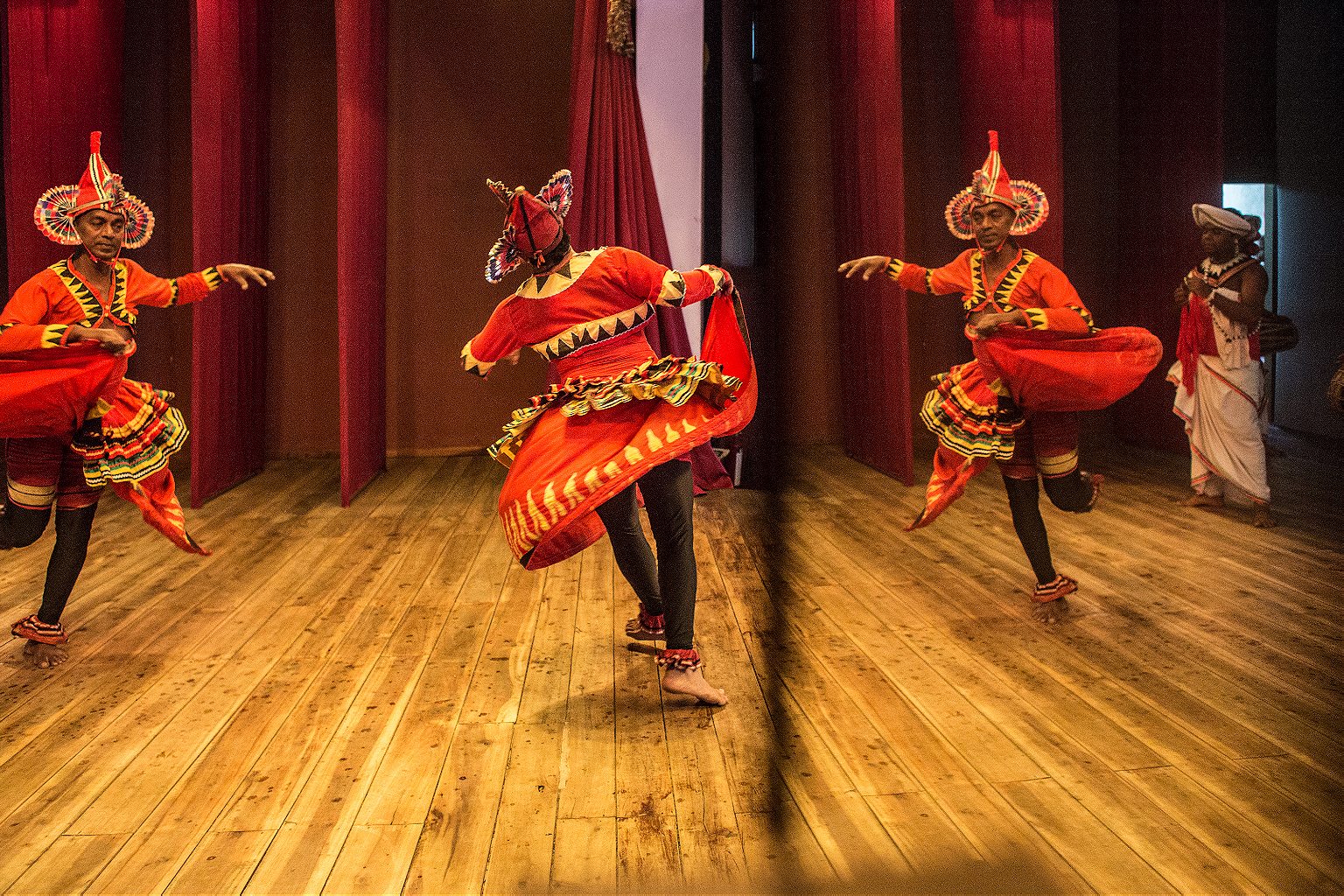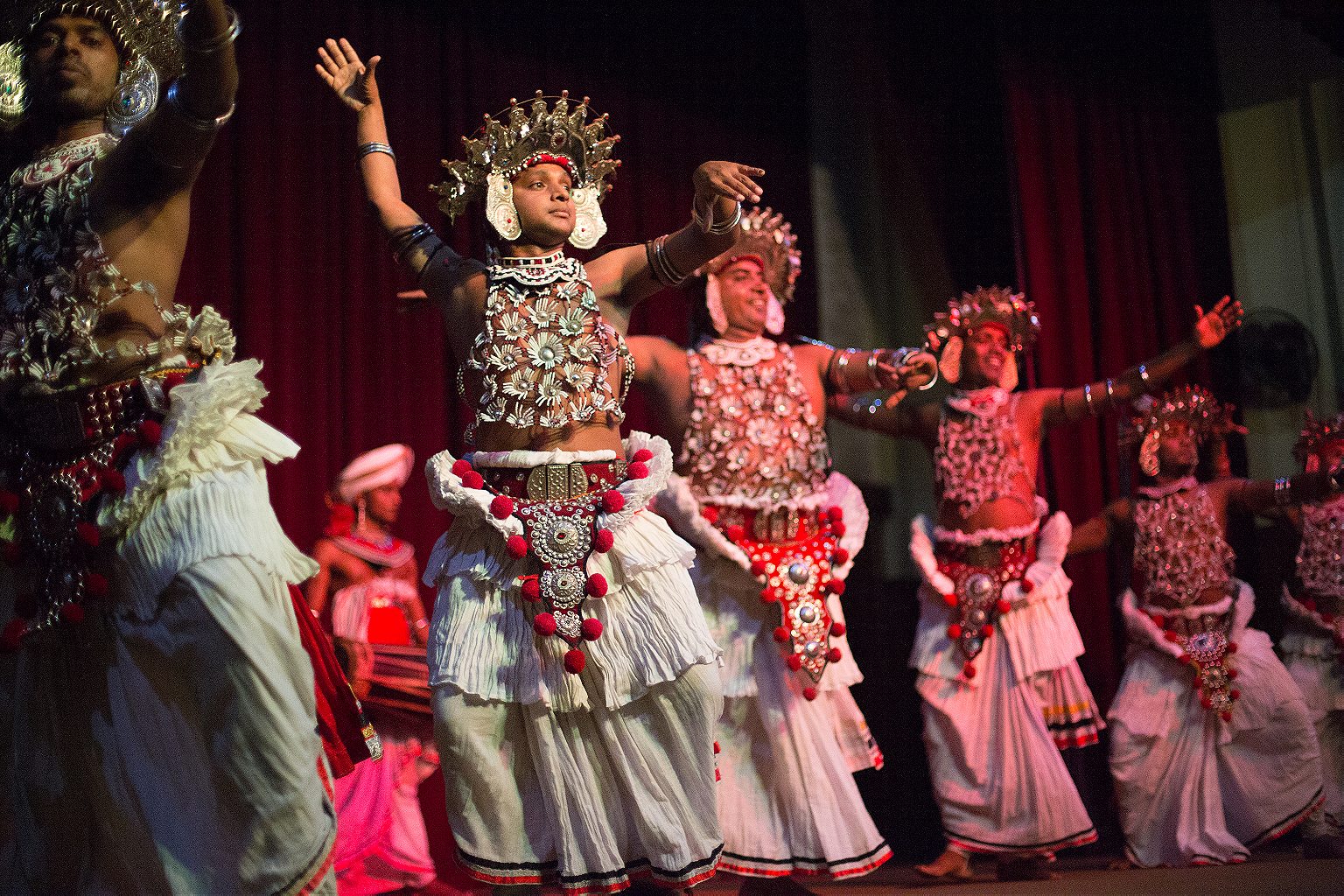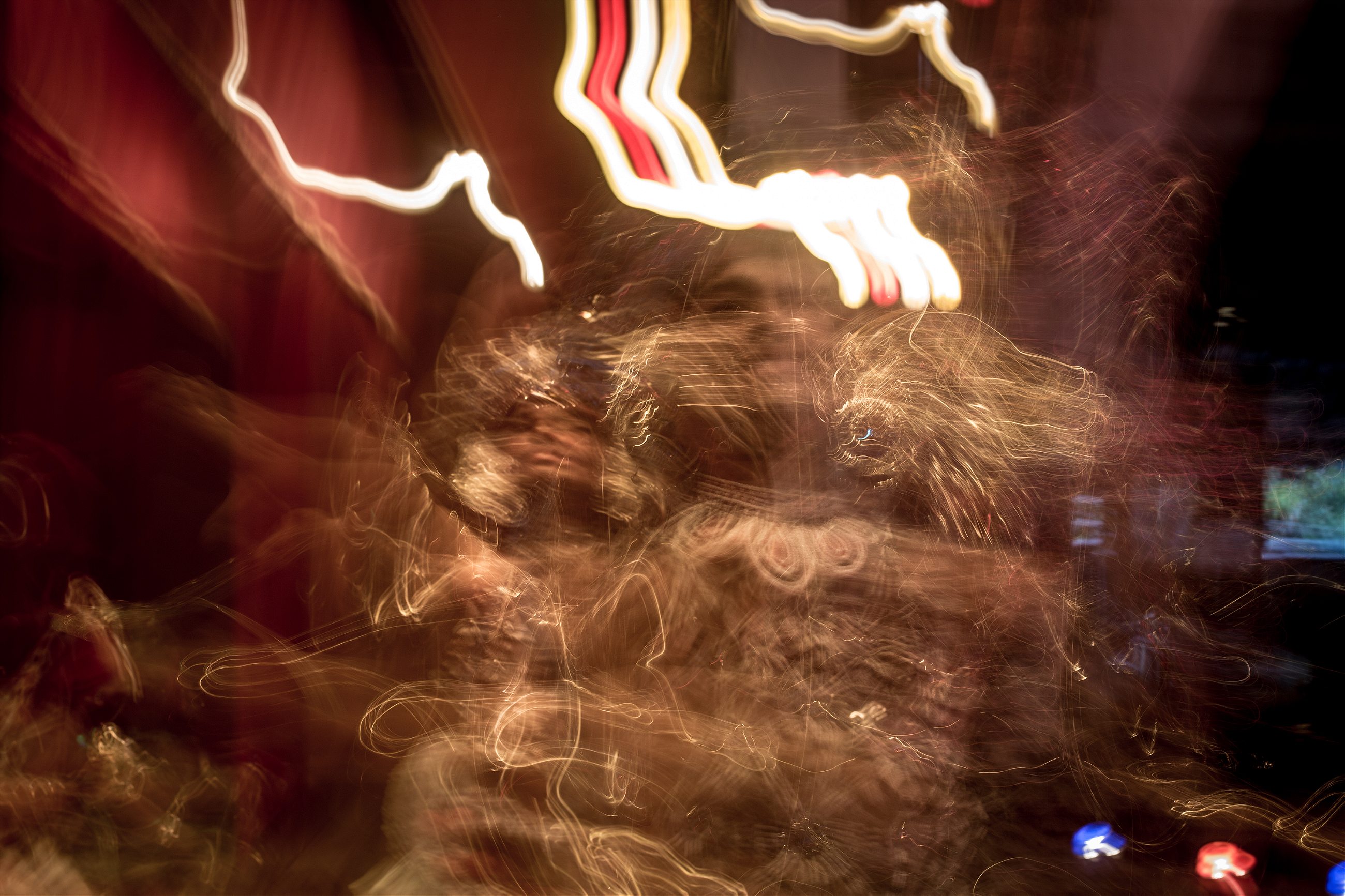Kohomba Kankariya, which originated in the Kandy region of Sri Lanka before the fifth century, is at the risk of disappearing.
Deep in the forest on the outskirts of Kandy, one of the largest cities in Sri Lanka, drumbeats echo through the trees in the early morning just as they have for centuries. The beats come from the home of Sumanaveera Guruunnanse and Samaraveera Guruunnanse, known as the Thiththapajjala brothers, who practice the traditional and elaborate Kandyan dance ritual known as Kohomba Kankariya.
Kandyan dance infiltrates all parts of Sri Lankan life—it is taught in classrooms as part of standard curriculum, practiced in dance schools throughout the country, performed during weddings as well as religious and secular rituals. In recent years, the dance has also become commercialized, with a number of performances at a number of venues frequented by tourists. But Kohomba Kankariya, which originated in the region and predates Buddhism (which dates back to 5th century BCE), is at the risk of disappearing.
Traveling to Sri Lanka? Here’s what you need to know before you go.

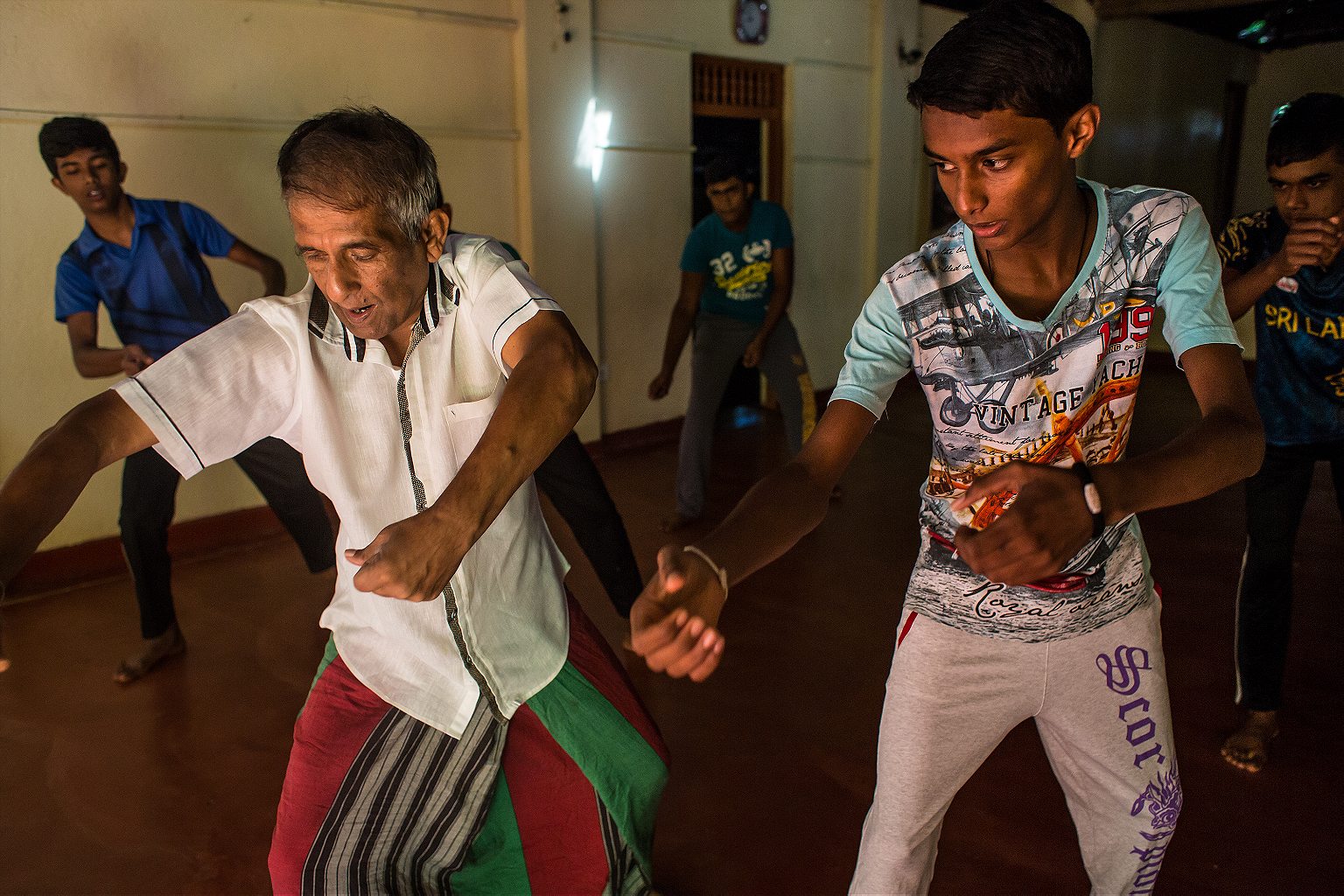


The dance form that exists today is a modern creation born from original elements of the dance which became simplified in the early to mid-twentieth century. Only certain sequences of the Kohomba Kankariya are taught in schools or performed on stage today, losing the essence and original intent of the art.
It’s traditionally a healing dance ritual, but today is performed to bring peace and bountifulness, often as all-night events that typically begin in the evening and last until dawn. Despite their dedication, most of the modern dancers have day jobs, are homemakers, or university students, and adopt dancing only as a hobby.
How a rice and meat dish connects modern Sri Lanka and its Dutch settlers
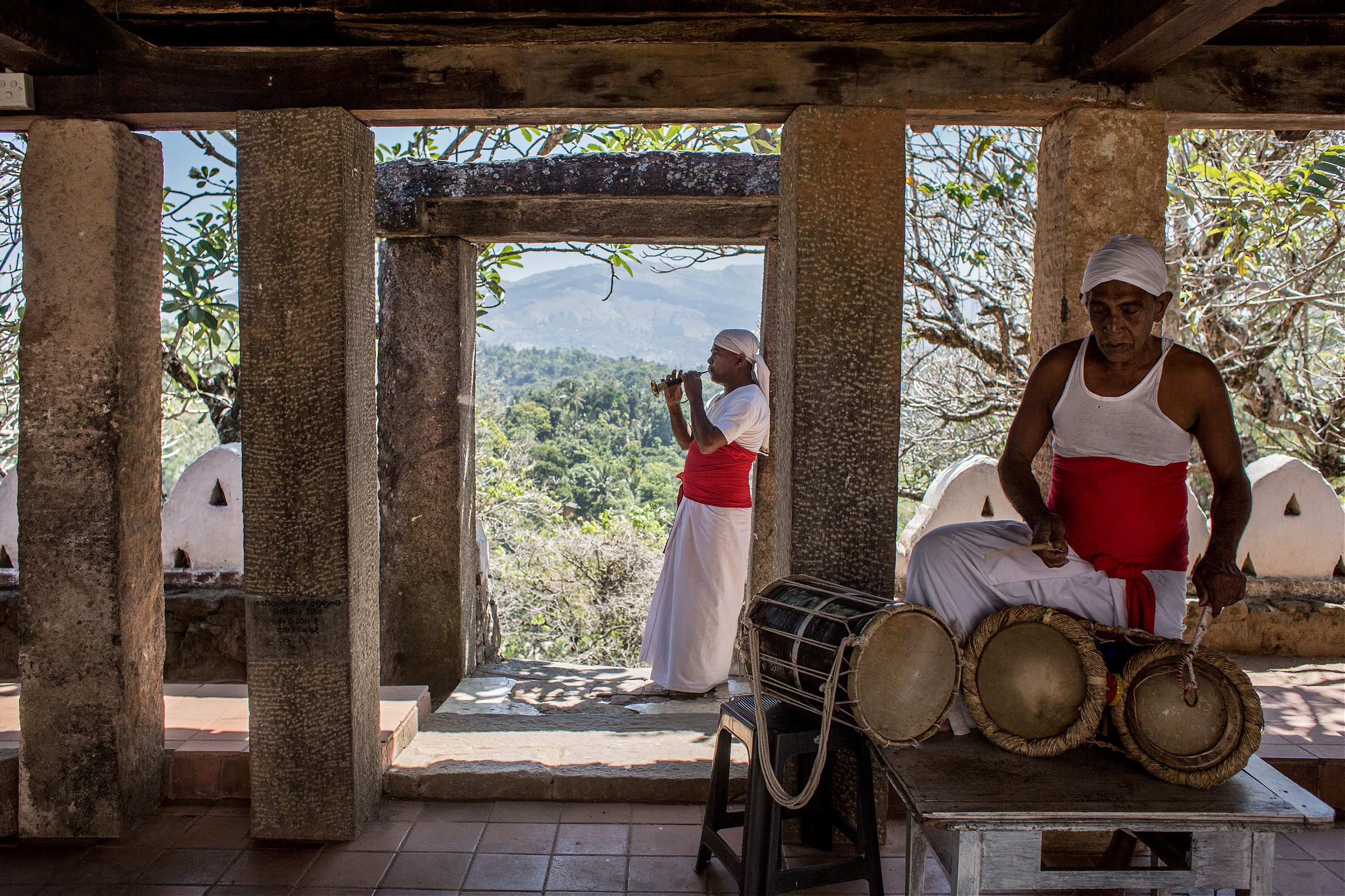


The Thiththapajjala brothers are descendants of more than seven generations of master dancers and drummers. These masters have dedicated their lifetime to their craft and pass on sacred knowledge of the art to their sons. A dancer will tell you he first learned the rhythms of drum and dance in the womb and then spends years in highly personalized training to earn the right to wear the ves costume and become a true master, a symbol of a dancer’s skill and status as a performer.
Fewer and fewer men pursue the family tradition and opt to take up professions that offer a better chance at supporting their families. For nearly a century, the family has been teaching weekly classes to 400 students who get to learn the traditional Kandyan dance from the experts—free of charge. The Thiththapajjala brothers say they bear the responsibility to uphold ancestral traditions, and teach kankariya to their sons.

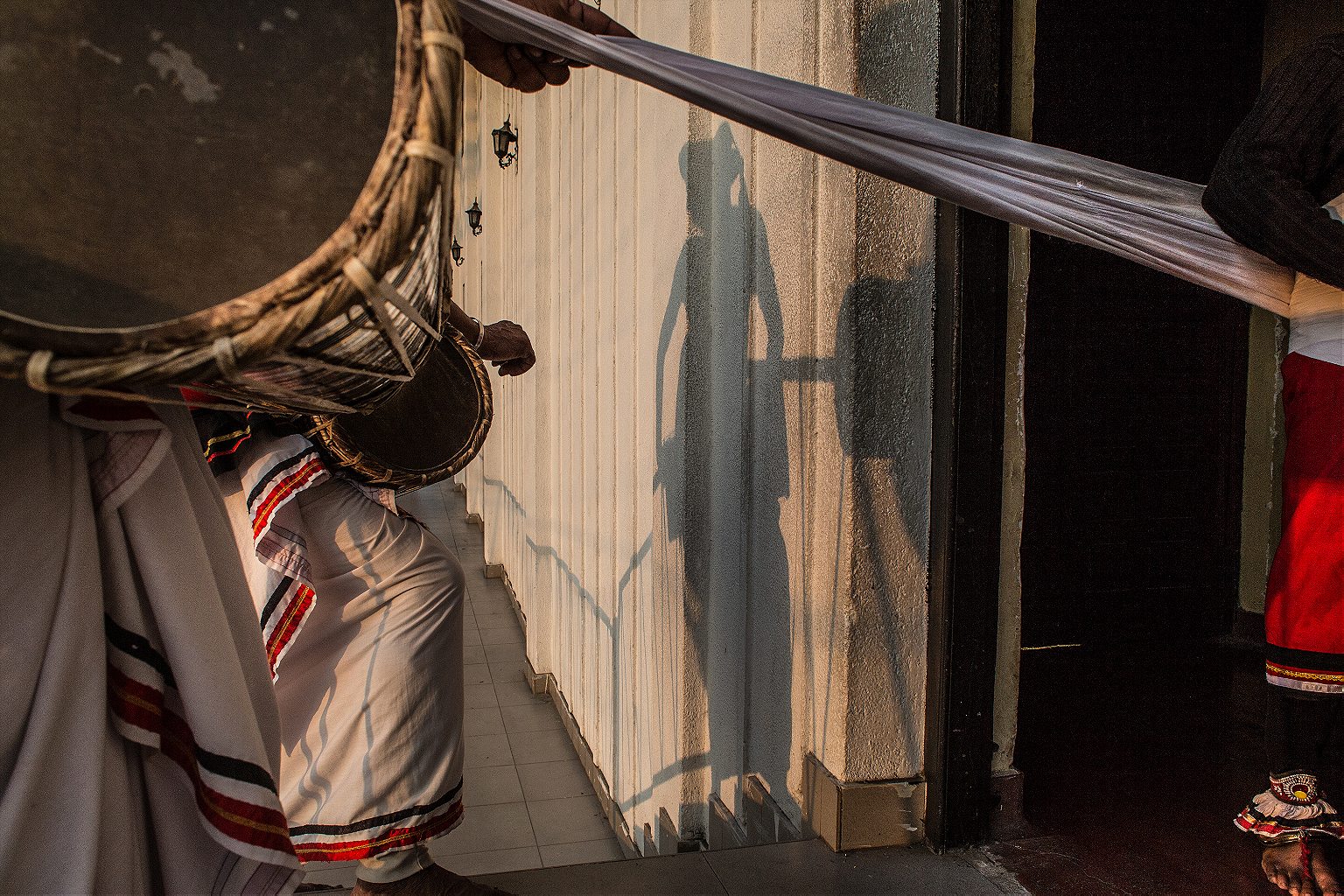
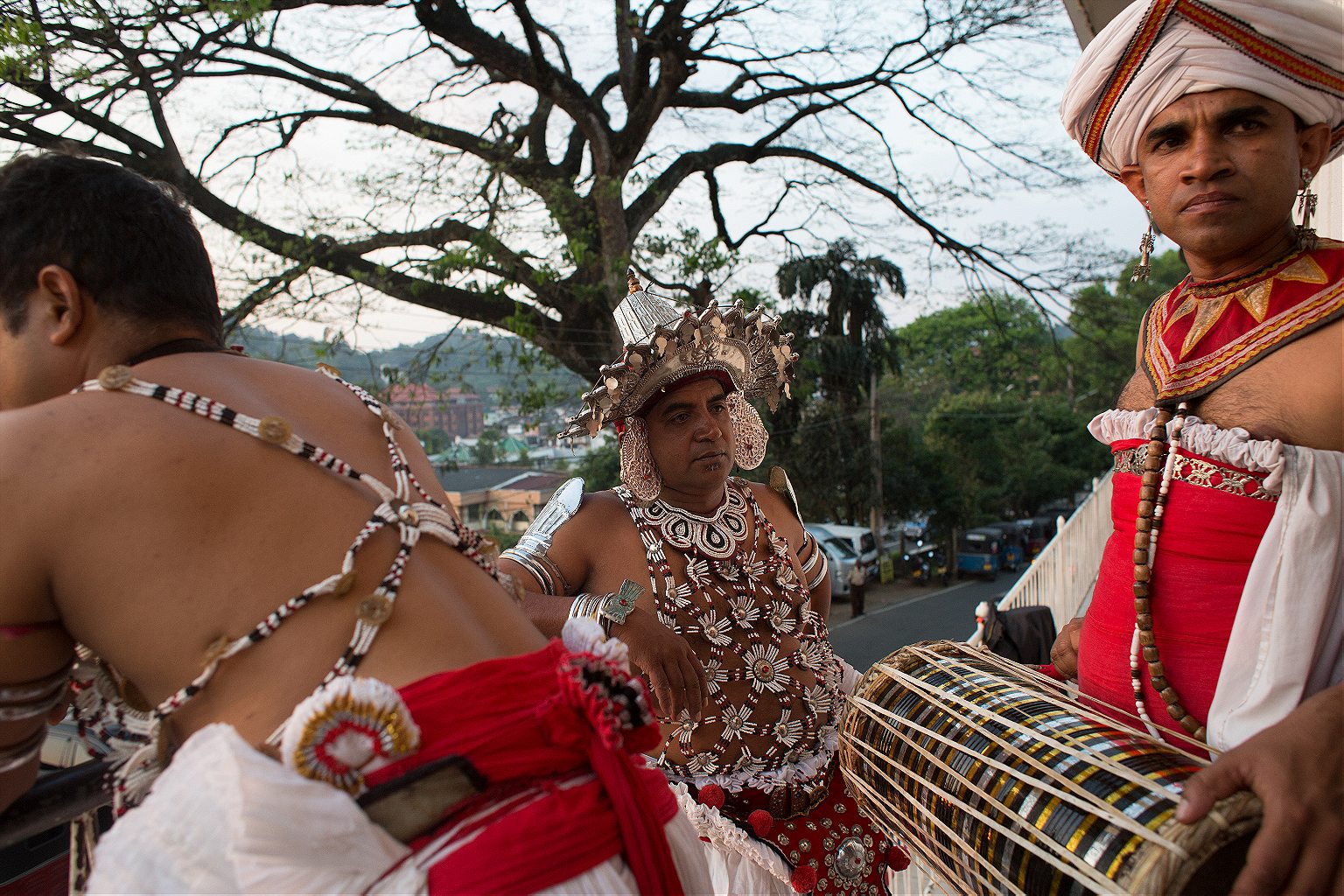
Sumanaveera Guruunnanse’s two eldest sons, Madhawa and Muditha, plan to continue learning the dance, but only for a limited time. They will eventually return to their day jobs as an Ayurvedic doctor and an engineer. Pabasara, now 17, is the youngest son in the Thiththapajjala family and will dedicate his life to the art of the dance and drum, with his two cousins by his side. Together, they represent the next generation of dancers and the ones who are being tasked with upholding the legacy of their forefathers.
But no one really knows how long they can sustain the dance, especially if one day one of the three young men decide to attend university or pursue alternate careers.
